Any small business owner knows the struggles that come along with marketing to promote brand awareness, especially for SMBs that are just starting up. Getting your young startup off the ground running isn’t a Field of Dreams type of thing where “if you build it, they will come.”
You still have to build it, but then work tirelessly to make the business known to the world. It’s even crucial to generate interest before you launch your business, but the good news is that the earliest phases of marketing can be done through a simple prelaunch campaign.
What Is a Prelaunch?
A prelaunch is a digital marketing tactic to get the excitement flowing and the word out there about whatever you’re selling - before you actually start selling it.
It’s usually done in the form of simple landing page advertisements that say something like “Coming Soon”, but some companies take it a step further by creating a waitlist to make the product even more enticing than it already is. It doesn’t matter if your small business is providing a service or selling a product; creating hype through a prelaunch is one of the best and easiest ways to market and promote early on.
Don’t believe us? Check out these five small businesses that might never have made it big without running a prelaunch campaign.
Robinhood Markets, Inc.
Who wouldn’t love the idea of trading stocks without having to pay any fees or broker commissions? This is what the entire Robinhood business model is based around, so nobody is really all that surprised by how well the company has been performing since its release in 2013.
What is shocking, though, is how well Robinhood performed even before their app was released to the world. The company was able to get almost 1 million users prior to its launch, all thanks to their prelaunch waiting list strategy.
Yep, you read that right. Even before the company officially existed, it was able to lock down 1 million waitlisted users. They were able to do this by waitlisting their leads through a landing page that utilized three powerful concepts:
- Compel Leads to Take Immediate Action
- Keep the Signup Process Simple
- Promote Free Marketing through Shareable Content
Since Robinhood has probably had the most successful prelaunch known to man, let’s take an in-depth look into each of their strategies.
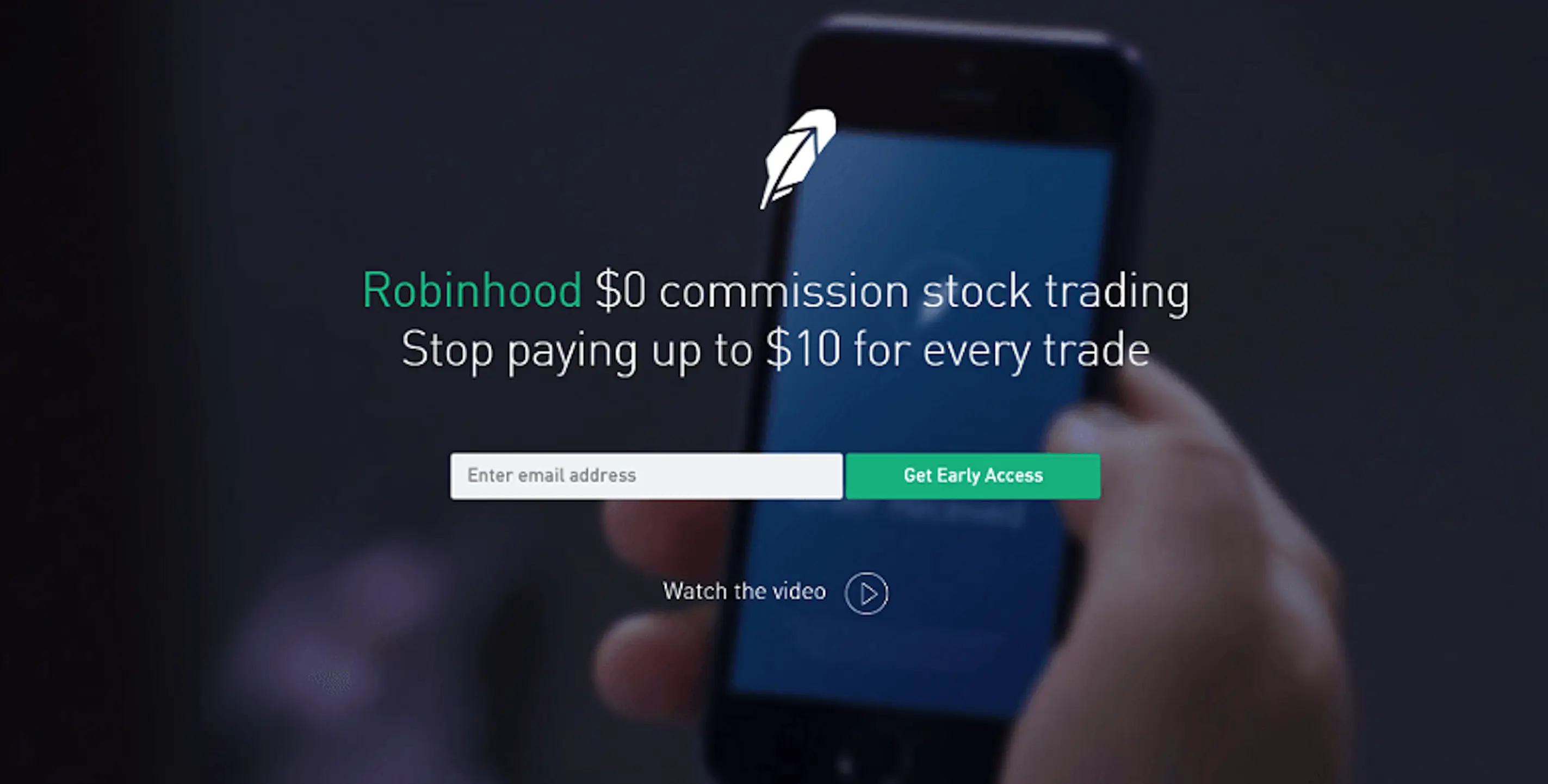
1. Compelling Leads to Take Immediate Action
The ultimate way to generate more leads is to compel the reader to take action. With the Robinhood prelaunch landing page, the company was able to compel readers by using the age-old concept of FOMO.
The Fear of Missing Out (FOMO for short) has a strong effect on all of us, so Robinhood decided to utilize that. They created an air of exclusivity by making a “waitlist”, giving the impression of limited supply and therefore instilling a fear of missing out. Smart, right?
2. Keeping the Signup Process Simple
Take a look at Robinhood’s prelaunch landing page and you’ll see that they went with a no-frills design and a simple (yetpowerful) hook. They kept the opt-in process simple so that anyone could get waitlisted in a matter of seconds.
3. Promoting Free Marketing through Shareable Content
There’s nothing like free marketing, and Robinhood really took advantage of this by making the content uber shareable and ultra engaging.
The original sign-ups for the prelaunch of the Robinhood app were from the company’s immediate family members and friends. From there, these immediate connections passed on the word about Robinhood, and eventually the prelaunch was able to get close to a million opt-ins.
For more info on how to generate some insane levels of interest for your small business, check out our guide to setting up a viral waiting list launch like Robinhood.
Monzo
Monzo has been able to generate almost 5 million users and counting, and a lot of them got interested before the banking app was even released.
Monzo learned a lot from the Robinhood prelaunch campaign by using a viral waiting list to get people talking. But this online banking solution took it a step further by displaying the number of people ahead of a user as well as the number of people behind them on the waiting list.
Then below the queue numbers, Monzo strategically placed a button saying “Bump me up in the queue”, which created that sense of urgency for immediate action we talked about before. Obviously, most people are going to click that big bright CTA to get bumped up the line for early access.
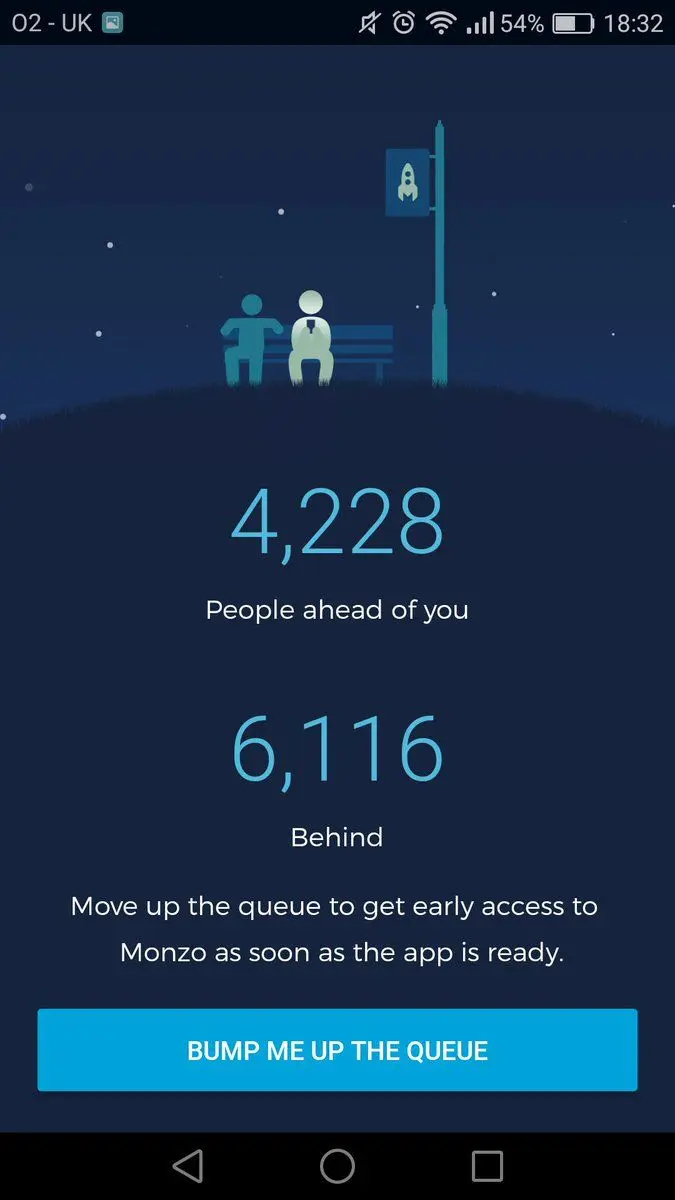
Another brilliant strategy behind Monzo’s prelaunch was the way they promoted sharing and got the ball rolling early on their free marketing. Every user that filled in the opt-in was given a unique URL to share, and whenever someone opted in through that URL, the user got bumped up the waiting list.
Sounds difficult to implement? Try launching our Prelaunch Waitlist campaign! It offers exactly that with a click of a button! No programming knowledge needed!
Harry’s
The Harry’s razor blade company clearly took a few notes from our guide to making a product a success before launch. In that guide, we talked about how powerful quality content can be and that one of the easiest ways to draw people in is through effective content marketing.
In just one week, Harry’s was able to generate about 100,000 leads from their prelaunch landing page. And it all had to do with the content. They created a page that spoke directly to their target audience using clever, funny, and easy-to-follow copy. The page reads:
“Harry’s is coming. Respecting the face and wallet since like… right now.”
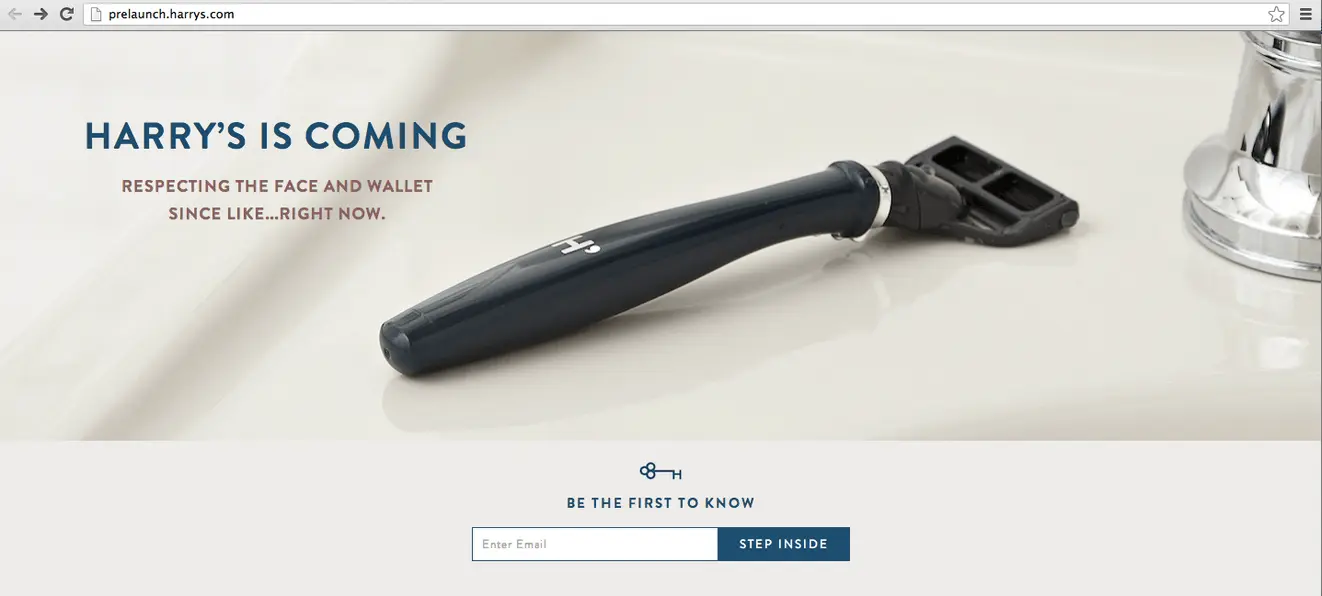
It doesn’t even say anything about shaving or razors, but they did a really good job of getting the point across by choosing the right image and wordplay.
Just like Robinhood and Monzo, Harry’s compelled each user to sign up to the email list by creating a feeling of FOMO with their CTA, which says “Be the first to know” right above the opt-in.
Token
While most new companies keep their prelaunch landing pages super simple with one image and a few short sentences, Token’s was a bit more complex. Part of the reason for this is that it had to be for readers to fully understand the product.
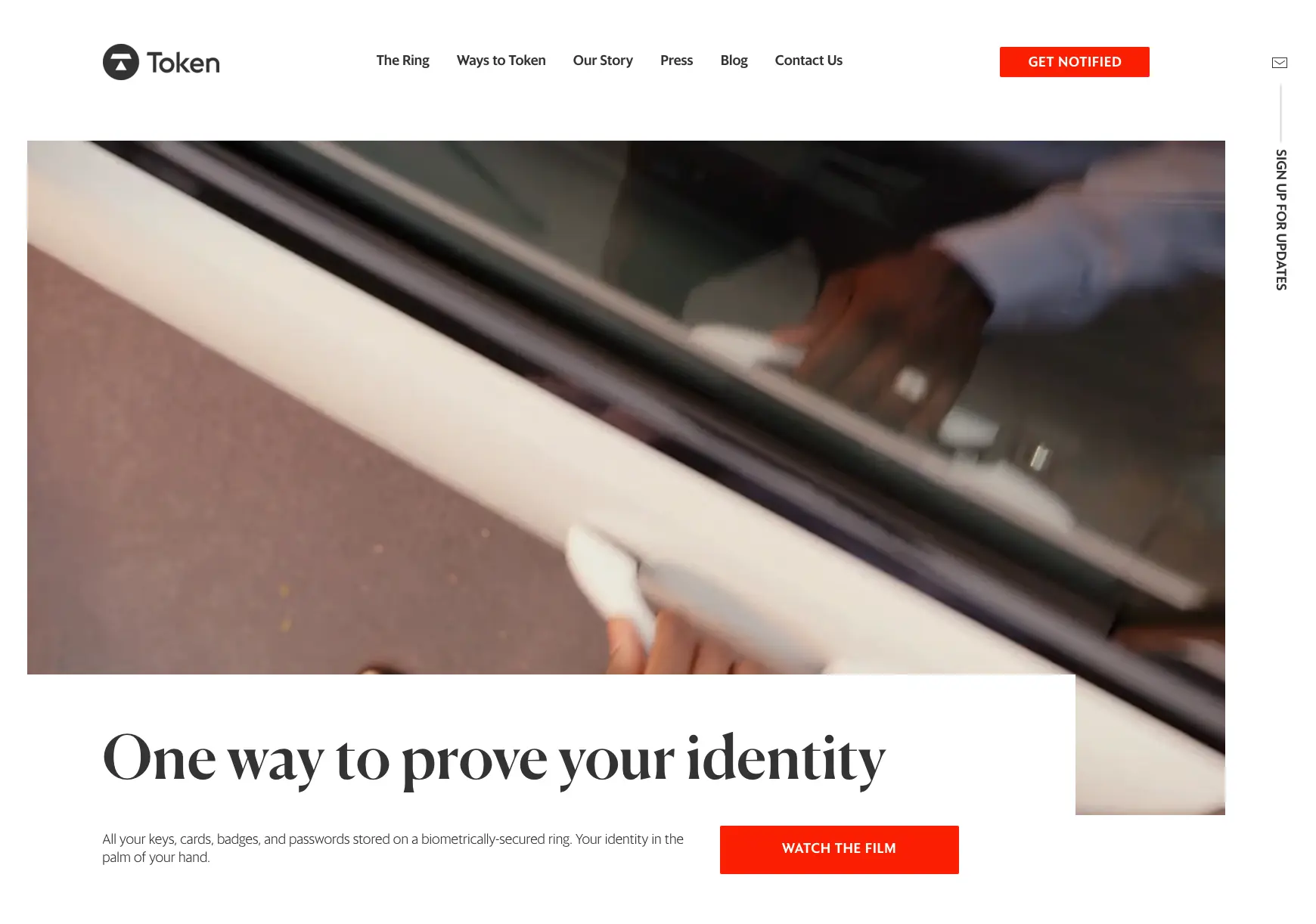
Token is a smart ring that keeps all your credentials in one secure place right on your finger. As you can imagine, there are a lot of moving parts to making this product/service work. Even though the concepts behind Token are complex and complicated, the company’s prelaunch landing page did a really great job of explaining it.
Sure, it was lengthier than the traditional landing page, but the way they integrated an informational video was a smart use of their resources.
The 5th
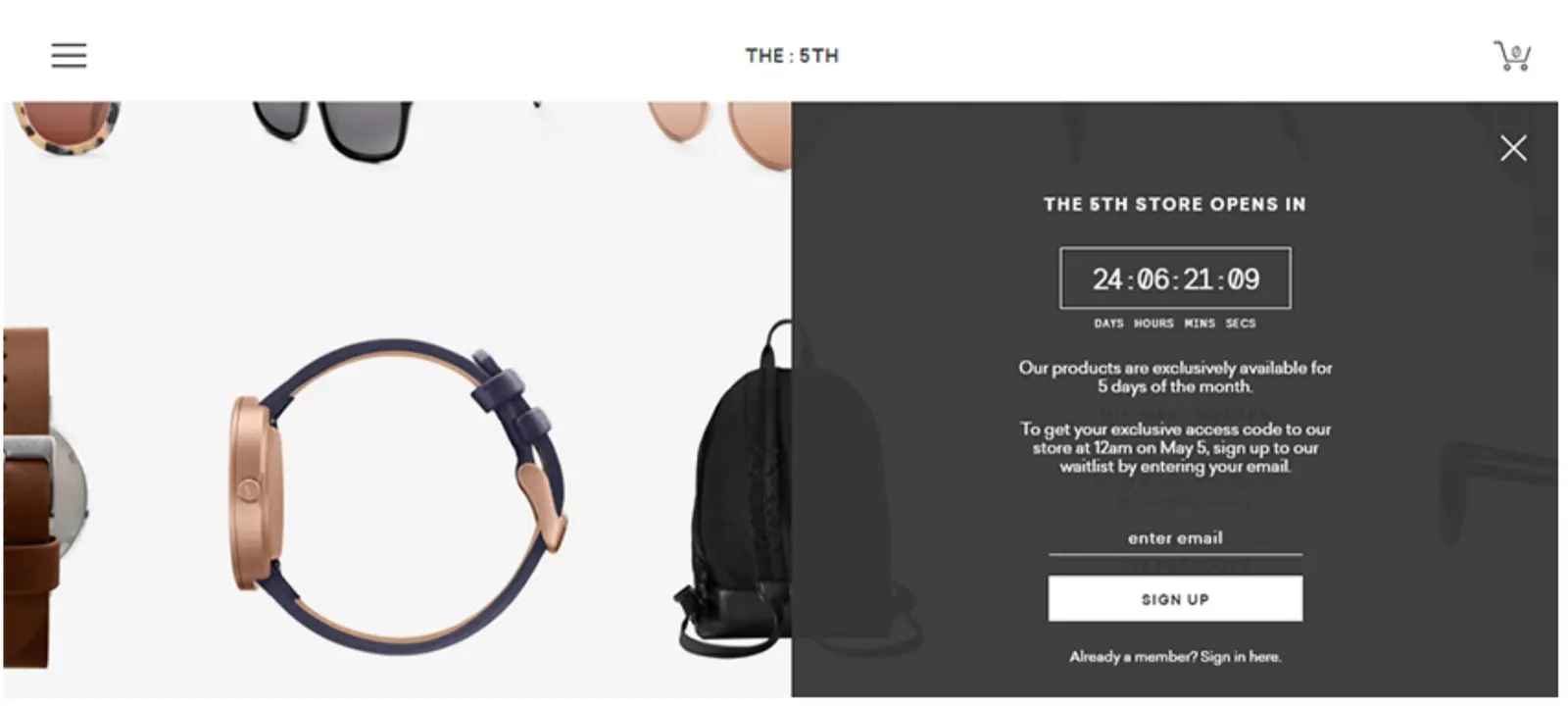
Who’s to say that a prelaunch can only be used for the official launch of a business? Not us, and definitely not The 5th.
The 5th is an online store that specializes in watches for both men and women. Aside from their glamorous accessories, the thing that makes The 5th stand out is their constant use of prelaunch campaign marketing tactics.
This company uses prelaunch landing pages for specific product releases as well as for new collections that are about to be released. They do an amazing job of highlighting urgency for their shoppers with a countdown clock for the product/collection’s release date.
Why SMBs Need a Prelaunch More than Major Enterprises
Actually, this is a misconception. Both small business owners and the marketing departments of large enterprises use prelaunch strategies to get ahead. Take Forever 21 as an example. This fashion powerhouse uses a prelaunch for just about every one of their new clothing collections.
Key Takeaways for a Successful Prelaunch
Before you can create a giveaway campaign or ramp up your social media presence, the very first step to generating interest for your business is to run a prelaunch campaign.
Some companies have been more successful at this than others, but if you do it right, you could go from being a small business to making it big in a short amount of time.
If you’re interested in kicking off your business on the right foot, sign up for KickoffLabs. Not only do we offer tools to help you create the perfect prelaunch waitlist campaign like Robinhood, but you’ll also find giveaway resources for copywriting, design, lead generation, and more.